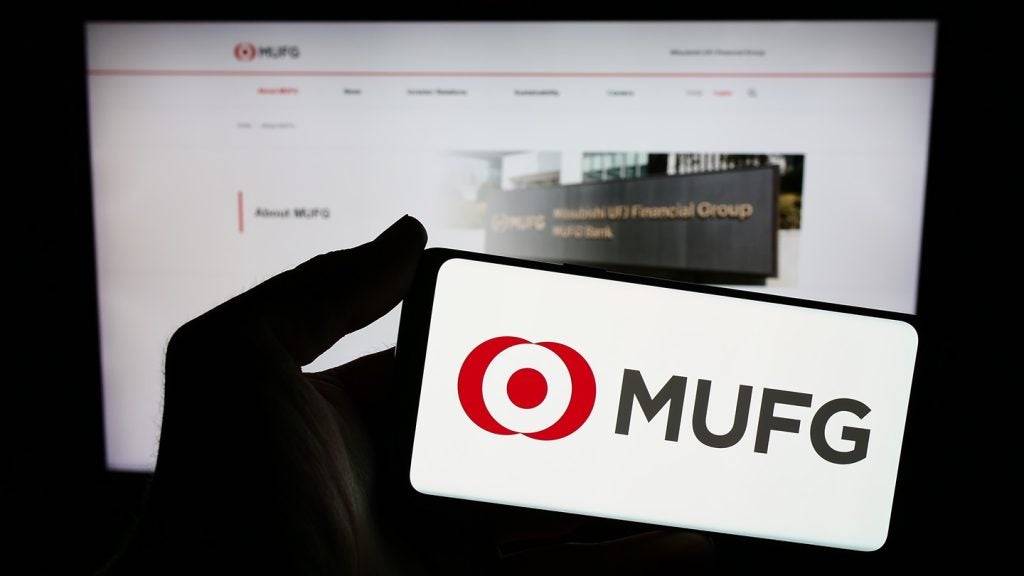The largest global wealth management force ranked
by financial adviser headcount and a top three player by client
assets is being formed under the new joint venture announced by
Morgan Stanley and Citigroup.
 Morgan Stanley is moving its
Morgan Stanley is moving its
high-end wealth management operations at home and abroad, including
Banque Morgan Stanley in Switzerland, into the venture, to be
called Morgan Stanley Smith Barney. Citi in turn is placing its
Smith Barney brokerage and wealth arm into the entity – businesses
which emerged as comfortably the most profitable parts of its
franchise in 2008. Citi’s global wealth management arm made a
profit of $1.1 billion, 45 percent down on the previous year,
overshadowed by the bank’s overall loss of $18.8 billion.
How well do you really know your competitors?
Access the most comprehensive Company Profiles on the market, powered by GlobalData. Save hours of research. Gain competitive edge.

Thank you!
Your download email will arrive shortly
Not ready to buy yet? Download a free sample
We are confident about the unique quality of our Company Profiles. However, we want you to make the most beneficial decision for your business, so we offer a free sample that you can download by submitting the below form
By GlobalDataThe first challenge facing the new venture
will be to stem client asset outflows at Citi, which jumped to $17
billion in the fourth quarter as nervy customers moved money to
better performing rivals, including Bank of America, which saw
inflows of $12.6 billion.
It remains to be seen how much damage has
been done to the Citi brand following its huge losses and the
decision to split into two operating units, Citicorp and Citi
Holdings.
Clients will also be hurting after big
declines in wealth, with assets under management (AuM) at Citi
falling 26 percent in 2008. AuM fell even further, by 27.9 percent,
at Morgan Stanley. Bank of America saw an 18.6 percent reduction
(see below).
The joint venture will be 51 percent owned
by Morgan Stanley, with $1.7 billion in client assets under
management. Citi Smith Barney will contribute just over $1 trillion
and Morgan Stanley $707 billion as of the third quarter,
representing a roughly 60:40 contribution by the two into the
shared venture.
Morgan is recognising this bigger
contribution by Citi by paying the latter $2.7 billion in cash. It
also has an option to buy out entirely the new entity in five
years.
Cash-strapped Citi will book a $9.5
billion pre-tax gain on the deal and add $6.4 billion to core Tier
1 capital, according to estimates by Meredith Whitney, a bank
analyst at Oppenheimer Equity Research.
Former Citi Private Bank consultant Phil
Molyneux, professor of banking and finance at Bangor University,
said the deal would help the businesses spread costs over a bigger
asset base. That would be helpful, because on a standalone basis
both had below-average profit margins, he added.
“In the current dreary banking business,
the wealth management land grab is on – because it is seen as low
risk, not very capital intensive, with solid long-term global
growth prospects,” Molyneux said.
He said one of the big challenges for
Morgan Stanley Smith Barney would be retaining high-performing
advisers and their clients when the ‘golden handcuffs’ came off –
referring to the sweeteners likely to be offered to advisers by the
new entity at the outset. Citigroup Private Bank is unaffected by
the deal, suggesting Citi is to focus on HNWIs rather than
broader-based wealth management. As of the fourth quarter,
Citigroup Wealth Management overall had $1.3 trillion in assets
under management, mostly attributed to Smith Barney. Of this total,
Citigroup Private Bank contributed around 25 percent ($336 billion)
in managed funds.
Citi’s affluent unit, Citigold, is also
unaffected by the deal. Aimed at those with $100,000 of assets or
more, Citigold competes with Standard Chartered’s Priority Banking
and HSBC’s Premier Banking services, and is hugely significant for
the bank’s global presence among wealthier customers. It acts as a
valuable “feeder” for clients upgrading to the private bank as they
become wealthier.
As well as the private bank and Citigold,
the venture will exclude Citi’s branch-based and institutional
financial advisers. But it will include Quilter, the UK wealth
manager which ironically Morgan sold to Citi in 2007 for an
estimated £225 million ($329 million).
The size of Morgan Stanley Smith Barney
means it will have the clout to compete with the Bank of
America/Merrill Lynch group. It will have 20,400 financial
advisers, compared to its rival’s total of 20,000, and $1.74
trillion of client assets – slightly behind BoA/Merrill’s $2
trillion or so.
The new entity’s chairman will be Morgan
Stanley co-president James Gorman while Citi’s global wealth
management chief Charles Johnston will manage the unit as
president. It is not clear what role the highly-regarded Morgan
president of wealth management Ellyn McColgan will play.
The two partners hailed the venture as
“the leading global wealth management platform”. While Morgan will
become a powerhouse in domestic US wealth, much of its operations
are in brokerage-based rather than high-end wealth. One estimate is
that client account size in the new unit will be little more than
$250,000 per client.
The two partners expect to make cost
savings of $1.1 billion from the deal and the word on Wall Street
is that significant headcount cuts could be made. These are likely
to fall in the combined back office operations as well as
eliminating the duplication of the 1,000 offices the venture will
inherit. Ultimately, up to 10,000 jobs could go.
Outlook for Citi still
unclear
 What will cloud Citi’s
What will cloud Citi’s
prospects is the programme of asset sales by CEO Vikram Pandit,
which has ballooned into a full-scale project to exit from the
previous ‘financial supermarket’ strategy of his predecessors,
analysts say.
Asset sales could include Nikko Cordial
Securities in Japan, as Citi, which has received two infusions from
the US government worth over $45 billion, looks to collapse into a
largely domestic consumer banking entity.
Some industry reports suggest Citi could
shrink by up to a third. Pandit is said to be considering the
divestment of a number of other businesses, including consumer
finance, private-label credit cards and retail businesses outside
the US.
David Trone from Fox-Pitt Kelton believes
Citi could unload its retail banks in Italy, Spain and Portugal,
along with some processing businesses. It sold its retail banking
business in Germany to France’s Crédit Mutuel-CIC for $6 billion
last year.
The Morgan Stanley/Citi transaction is
expected to close in the third quarter of 2009, subject to
regulatory approval.








